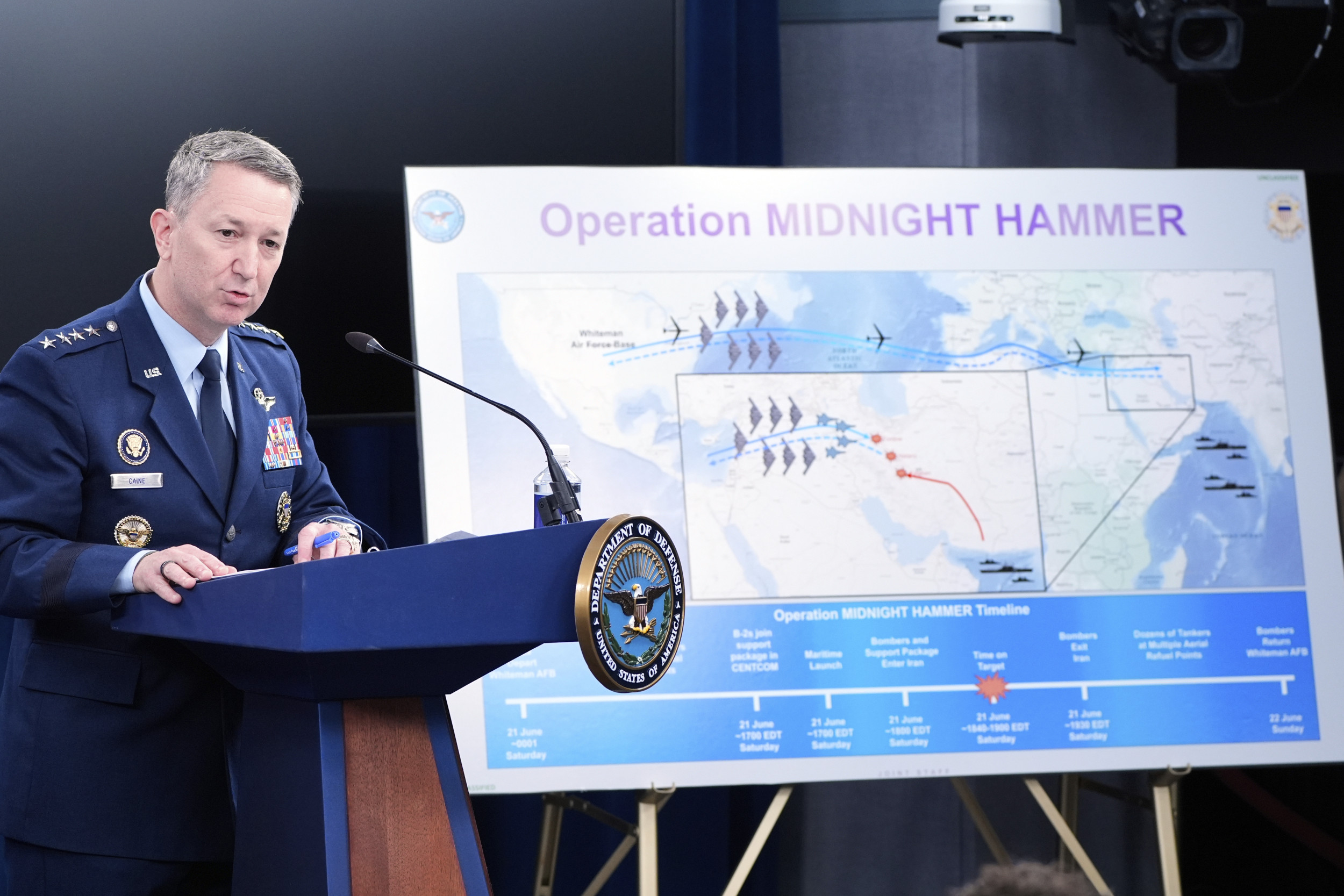
Israel believes that enriched uranium stored deep underground at Iran’s Isfahan nuclear facility—one of three sites targeted in last month’s U.S. airstrikes—may still be retrievable, according to a senior Israeli official who spoke to reporters on condition of anonymity.
“The enriched uranium at Isfahan could potentially be retrieved by Iranians,” the official said Thursday. The official cautioned that “reaching it would take a very difficult recovery effort.”
The Israeli assessment also holds that Iran’s stockpiles were spread across Isfahan, Fordo, and Natanz, and had not been moved before the “Operation Midnight Hammer” strikes, despite some nuclear experts suggesting Tehran may have attempted to relocate them as tensions rose and U.S. involvement appeared imminent.
Associated Press
The White House declined to comment on the situation to the Associated Press on Thursday, as questions continue to mount about whether the U.S. mission achieved its intended goal of permanently disabling Iran’s nuclear program.
The evolving analyses from Israel, U.S. intelligence agencies, and international observers suggest that while damage was indeed inflicted, Iran may yet have the means—or at least the potential—to rebuild.
The June 22 strikes, ordered by President Donald Trump, marked a bold U.S. intervention into Israel’s ongoing conflict with Iran, aimed at crippling Tehran’s nuclear ambitions. Trump has repeatedly insisted the attacks “obliterated” the sites, declaring them fully destroyed. Defense Secretary Pete Hegseth echoed that sentiment, calling the facilities “destroyed.”
However, early assessments from the U.S. Defense Intelligence Agency offered a more cautious analysis, stating the Fordo, Natanz, and Isfahan sites suffered significant—but not total—destruction.
CIA Director John Ratcliffe, defending the operation before skeptical lawmakers, asserted that the U.S. eliminated Iran’s only metal conversion facility—an essential part of the nuclear process.
Despite these claims, doubts remain about the efficacy of the U.S. munitions used in the strikes. Two officials from the U.S. Defense Threat Reduction Agency, which developed the GBU-57 Massive Ordnance Penetrator bombs specifically for hard-to-reach Iranian targets, said Thursday they have yet to confirm whether the bombs reached the intended depth. These officials also spoke on condition of anonymity, revealing that the agency still awaits post-strike data to evaluate bomb performance.
Meanwhile, attention has shifted to Isfahan, where U.S. B-2 stealth bombers did not strike, unlike the Fordo and Natanz sites. The Isfahan nuclear site in Iran is known for its role in the conversion of uranium, a key step in the nuclear fuel cycle.
Although B-2s were not used for Isfahan, the Pentagon said a U.S. submarine launched more than two dozen Tomahawk cruise missiles against targets at the Isfahan site. These missiles were likely aimed at different types of targets within the complex compared to those targeted by the B-2s at Fordo and Natanz.
Iranian President Masoud Pezeshkian, in a recent interview with conservative U.S. broadcaster Tucker Carlson, said the strikes had caused such extensive damage that Iranian officials have yet to access the affected nuclear facilities.
“Unfortunately, as a result of the United States’ unlawful attacks against our nuclear centers and installations, many of the pieces of equipment and the facilities there have been severely damaged,” Pezeshkian said.
He added that Iran is open to resuming cooperation with the U.N.’s nuclear watchdog, the International Atomic Energy Agency (IAEA), but cannot yet guarantee full access to inspectors.
Rafael Grossi, director general of the IAEA, stated last month that Iran’s facilities “have been destroyed to an important degree.” Still, he added a caveat: “If they so wish, they will be able to start doing this again.”
Grossi emphasized that a full damage assessment depends entirely on Iran allowing inspectors into the sites.
“Frankly speaking, one cannot claim that everything has disappeared, and there is nothing there,” he said.
This article includes reporting by the Associated Press.
